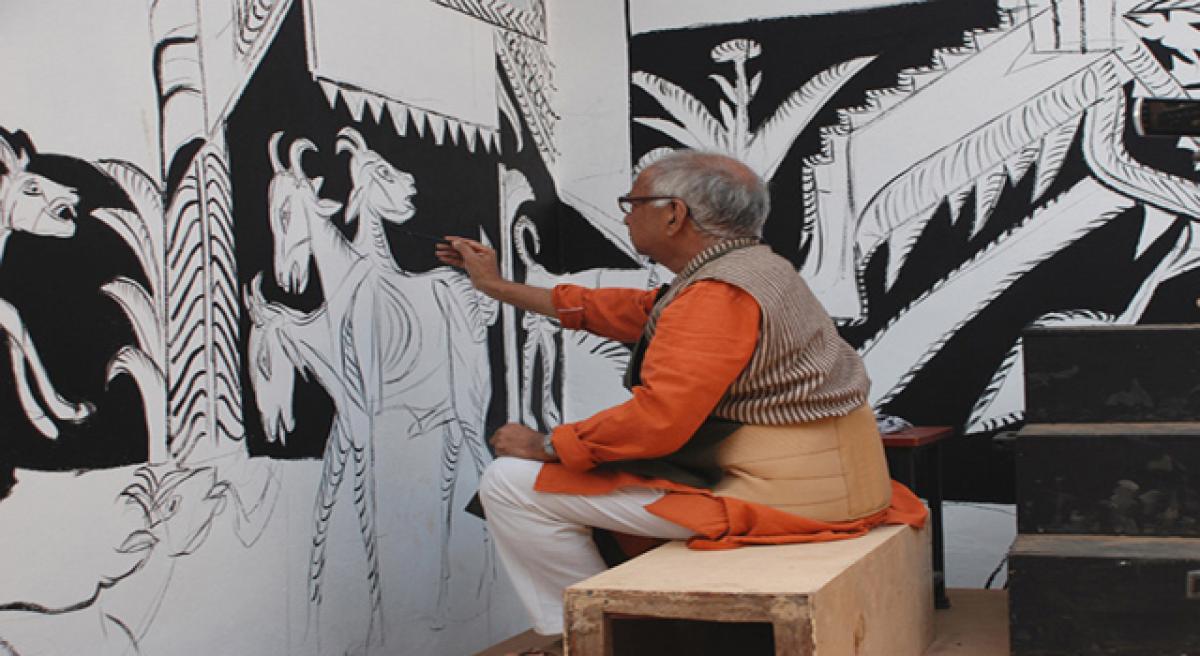Live
- Slur against Kumaraswamy wrong, Minister Zameer will be corrected: K’taka Cong
- Australian towns ordered to evacuate amid bushfire threat
- BJP backs LG's crackdown on illegal immigrants in Delhi
- AMR a global health threat, requires urgent action via one health approach: Anupriya Patel
- BJP planning big communal clash; we will expose them after Maha polls, says K’taka DyCM
- Sharad Pawar makes a soul-stirring plea 'to regain the glory of progressive Maharashtra'
- Seven soldiers killed in attack on Pak military camp in Balochistan
- ICC announces 2025 Men’s Champions Trophy tour to begin in Islamabad
- Americans increasingly vote along class lines, not racial ones: Report
- Chandrababu's brother Rammurthy Naidu Passes Away in Hyderabad
Just In

Born in 1924 in Palakkad in Kerala, Professor KG Subramanyan, was a student of economics at Presidency College, Madras. He was known for his Gandhian ideology and was actively involved in the Indian freedom struggle.
Born in 1924 in Palakkad in Kerala, Professor KG Subramanyan, was a student of economics at Presidency College, Madras. He was known for his Gandhian ideology and was actively involved in the Indian freedom struggle.
In the year 1944, he visited Santiniketan to study in Kala Bhavan, the art faculty of Visva Bharati University, under the tutelage of Nandalal Bose, Benode Behari Mukherjee and Ramkinker Beij and studied there till 1948.
He became a lecturer at the Faculty of Fine Arts in MS University, Baroda in 1951. In 1956, he went to study briefly in London at the Slade School of Art as a British Council scholar. He went as a Rockefeller Fellow to New York in 1966.
In 1980, Subramanyan went back to Santiniketan to teach in Kala Bhavan, Visva Bharati University, as a professor in painting and retired in 1989. In the same year, he was made a Professor Emeritus of Visva Bharati.
As a student from the batch of 1986, I got a fair exposure to the teaching methodology of Mani Da, as he was popularly known in and outside of Santiniketan. He brought context and understanding to contemporary Indian art; it was from his teachers Nandalal Bose, Benode Behari Mukherjee and Ramkinker Beij that he had absorbed the indispensable message of contravening suffocating tenets of colonial art education to nurture the unrestrained contemplation of the modernist.
He had the distinctive capability to plunge into the profound cultural significances of time-honoured art forms of the Indian soil, to form expressions that articulated the present-day framework with his witty and revolutionary soaring amidst the physical and the fantasy.
In his essay ‘Do hands have a chance’ he reasons why handicrafts have to be protected; ‘The main virtue of handicrafts that we cherish and that motivates us to strive for their continued presence in our midst is their aesthetic value…this makes us store them in museums even after they are thrown out of use, as living relics of a culture.’ This reflects his farsighted vision in envisaging art and craft as part of the creative gamut of culture.
He worked with everything between a minute to monumental, clay to cloth and nurtured similar interests amongst the students to integrate diversities of material and scale, this understanding dawned as we saw him create huge terracotta murals and paint the black and white mural of the design studio.
He printed lithographs, made toys and painted soras earthen clay convex plates in front our eyes in preparation for the Nandan Mela, in celebrating Nandalal Bose’s birthday. He reached out to the children with his illustrated children’s books, leaving out no one from his magical world of creative play.
In his essay; ‘The magic of making’ he mentioned, “Each process moves from one discovery to another and, linked together, they build its body dialect. An artisan working with clay knows it has one dialect; when he works with wax he knows it has another.
When he goes from wax to wood, he realises that the wood’s dialect is the world apart. They may have things in common but the differences are large. When he knows this, he is not handling clay, wax or wood but its dialect or voice. He mixes his voice with its. So what comes through owes as much to its voice as his.”
Humble in attire and sensibility he was accessible to anyone who had a thirst for knowledge and creativity, at the annual exhibition of Kala Bhavan each year. I have seen him go through each exhibit intently, not forgetting to make a witty comment that would both enthrall and enlighten the students around him.
He was seamless in being an artist, a teacher and a writer of great insight. The essays and art writings by him are relevant across culture to nurture creative minds for centuries to come.
He plunged deep into the contextual core with reference, to culture, modernity and tradition and resurfaced with convictions as he wrote: “This is what Nandalal and Okakura seemed to have concurred on. Tradition conceived not as a steamroller but as a support to individual growth.
Tradition that is not so much concerned with the survival of the past as the enrichment of the present…’ KG Subramanyan, ‘The concept of tradition, The Magic of Making’.
By: Koeli Mukherjee Ghose
The writer is an artist, arthistorian and curator

© 2024 Hyderabad Media House Limited/The Hans India. All rights reserved. Powered by hocalwire.com







